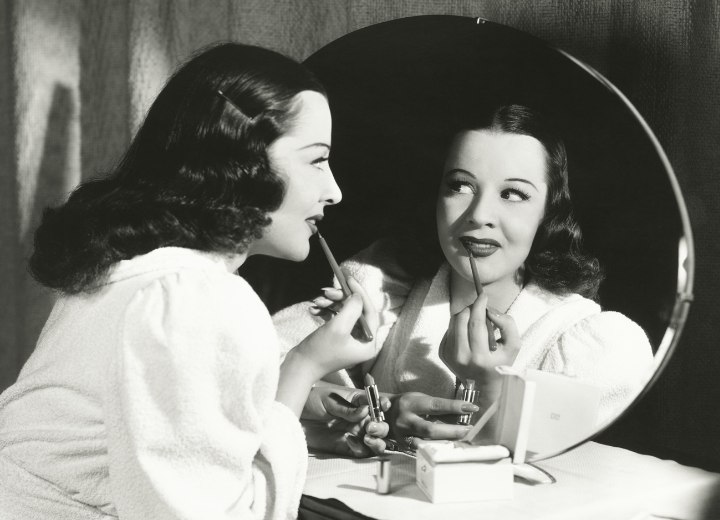1940s Hairstyles and Fashion

Tight sweaters were all the rage as boyfriends would pick up their sweethearts in zoot suits. Eyebrows were raised, and disapproving looks abounded as the two-piece bathing suit made its debut, met with many a distasteful frown. After all, what was this world coming to anyway?
In the US, most men were drafted into the Army and either married their sweethearts before heading off to war or upon their return, if they did return. They danced to the tunes of Glenn Miller, Tommy Dorsey, and Artie Shaw. These were the years of the big band sound, filled with saxophones and clarinets that ushered in swing and jitterbugging. Fashion was elegant, with ladies ensuring they were always adorned with gloves and exuded femininity, perfectly encapsulated by being "in the mood" as the music played.
Sultry Mae West, with her daring demeanor, famously quipped, "Why don't you come up and see me sometime?" The ladies of that age were scandalized by her boldness, while men adored her. The average salary during this decade was a mere $1,299, with the minimum wage set at only $0.43 per hour. Only 55% of people in the US had indoor plumbing. War bonds were sold, and food rationing was in effect. With the return of the GIs from the war, the baby boom began.

Hats of all kinds were fashionable and always worn. Some hats had large brims cocked to one side, while others dipped in the front or were worn completely atop the crown, resembling the inside of a flower. Perhaps that was the intention at the time. Others had ribbons twined around them, adorned with large bows in the back or on the side, as women usually wore their hair up or away from their faces. When they married, they would wear a veil over their face with the crown directly atop their heads.
There were small hats with large feathers and large hats with small feathers or bows that sat directly atop their heads, almost touching their foreheads. Some hats had ties securing them to the back of their hair, while others featured small veils to add an air of mystery. Some looked more like very large hair ornaments than hats. Hats were considered a necessity, with most women not daring to leave their homes without covering their heads in some manner, even if it was with a tasteful decorative scarf.
Their hairstyles were equally modest yet captivating, just like their hats during this time. It was crucial for things to be orderly during these troubled years, reflected in their hairstyles and attire. Hair was washed with simple shampoo, styled with a thick styling agent, and set using clips, socks, fabric scraps, or, in the late 1940s, rollers (mostly clips). A hairnet was carefully placed over the head as they sat under a large tube-like hot dryer to dry. After removing the clips, vigorous brushing followed as the stylist shaped the hair close to the head.
Continue reading ...